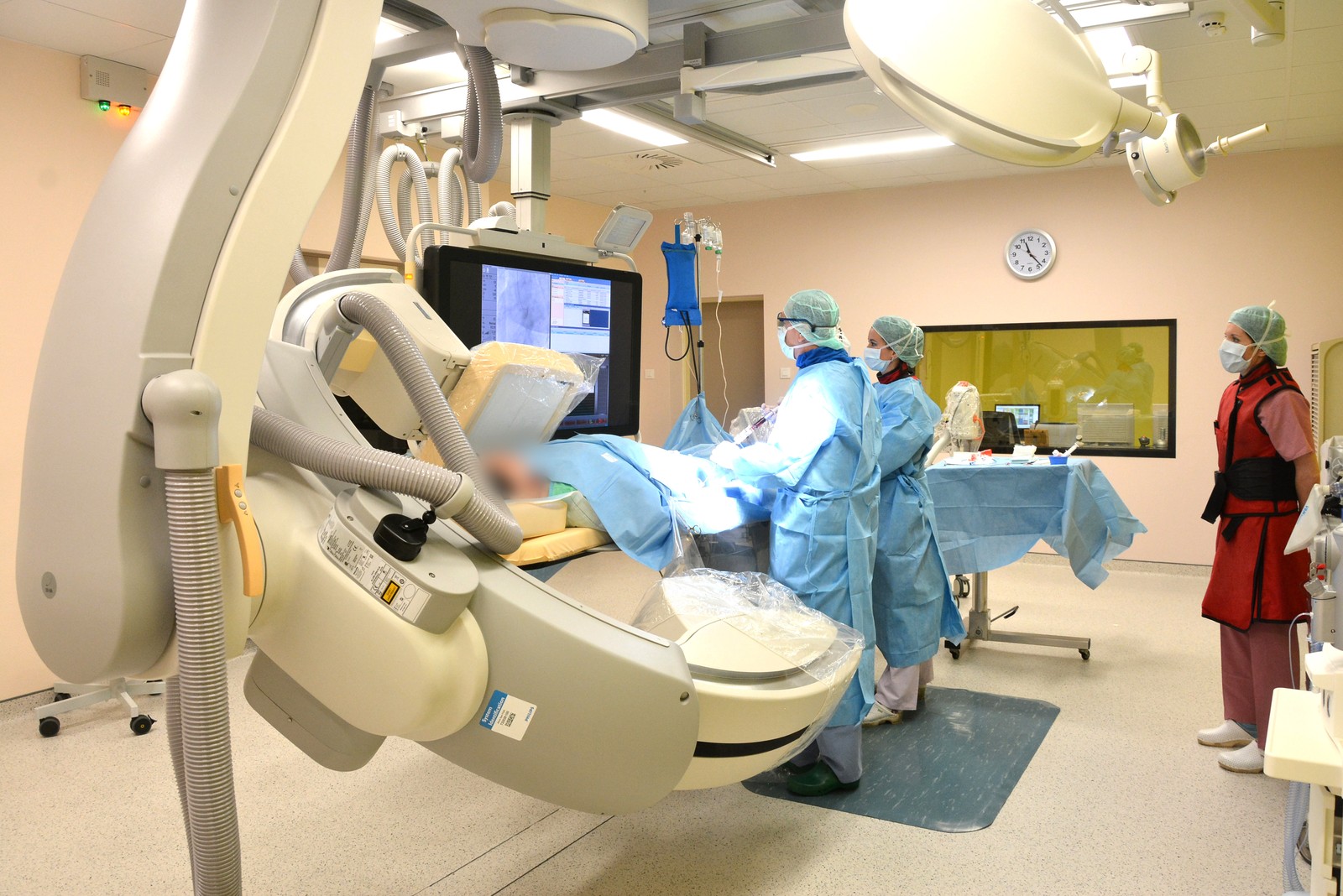 00389 2 3091 484
00389 2 3091 484
MEDICAL SERVICES
INTERVENTIONAL RADIOLOGY AND CARDIOLOGY
Interventional cardiology
Interventional cardiology deals with transcatheter (minimally invasive) treatment of certain heart diseases. The benefits of these interventions are reduced pain, significantly reduced risk of infection, avoiding large scars, and shorter recovery time after the intervention. In most cases the patients are awake during the intervention, and anesthesia is applied locally and the patients can go home in a few hours.
Heart catheterization
A procedure where the cardiologist makes a small incision on the arm or the leg and inserts a catheter through a blood vessel to the heart. This procedure is used to:
- Determine the location and the size of blood vessels stenoses
- Determine the pump force of the heart and the function of the valves
- Take a blood sample from a specific segment
- Determine the blood pressure in a specific segment
- Inject a contrasting agent visible under x-rays in the arteries in order to determine blood flow.
The information obtained from this procedure helps plan cardiovascular surgery or help resolve the condition with other interventional procedures such as angioplasty.
Coronarography
Selective coronarography is a procedure used to diagnose congestions of the coronary blood vessels (blood vessels that supply the heart muscle with blood). This method is performed in a catheterization laboratory in a sterile environment, where, usually through the right arm, the physician places a plastic guide tube (a small tube) in the artery and through it the physician inserts a catheter to the coronary blood vessels, then a iodine based contrast agent is injected and the blood vessels of the heart are imaged using X-Rays.
Angioplasty and stenting
Angioplasty / percutaneous coronary intervention
Used to open stenosed arteries due to atherosclerosis using a catheter inserted through an incision in an arm or a leg to the arteries that feed the heart. The catheter has a deflated ballon at the top and when it reaches the stenosed or clogged arteries, the ballon is inflated and then it pushes the atherosclerotic plaque towards the wall of the artery, thus restoring the blood flow.
About 70% of the angioplasties end up with stenting – insertion of a small metallic cylinder, called a stent, the artery.
There are 2 types of stents: Bare metal stents and Drug eluting stents that prevent scarring and reducing the risk of further closure of the artery.
Balloon valvuloplasty
Used to widen narrowed valves that do not open properly, for example in the event of aortic stenosis. During this procedure, the balloon at the apex of the catheter is inflated in order to stretch and fully open the valve.
TEVAR and EVAR
– Thoracic endovascular aortic repair (TEVAR)
– Endovascular treatment of abdominal aortic aneurysms (EVAR)
Minimally invasive procedures involving the placement of a special stent in the weakened part of the aorta, thus normalizing the blood flow. This method is used to resolve aneurisms or dissections of the thoracoabdominal aorta.
Transcatheter aortic valve implantation (TAVI)
A minimally invasive procedure used to treat severe aortic stenosis through a catheter (without the need to open the thorax).


